The Newbie Astrotog
5 September 2022Hi – this is where I will share my experiences and learning about my new hobby, Astrophotography.
Recently, I’ve bought my first, very basic telescope and have taken a few shots mounting my phone camera and a DSLR to it. It’s great for general viewing, but I’d need to buy a much more expensive upgrade to use for serious imaging of planets etc.
(on a phone, these gallery images may be better viewed in landscape mode)
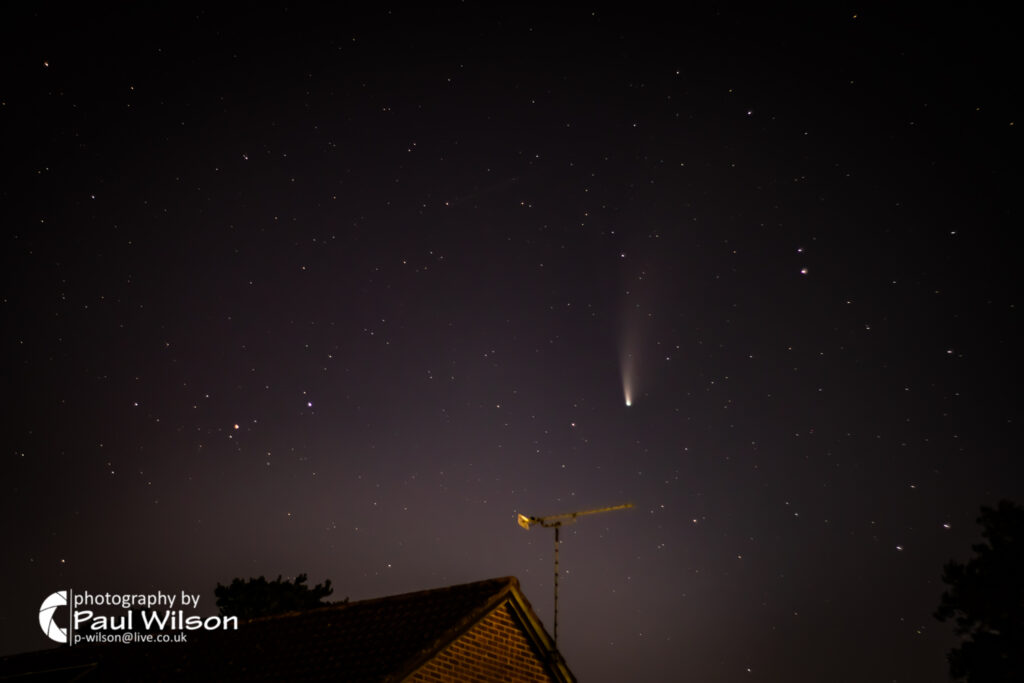
Neowise Comet
Captured in 2020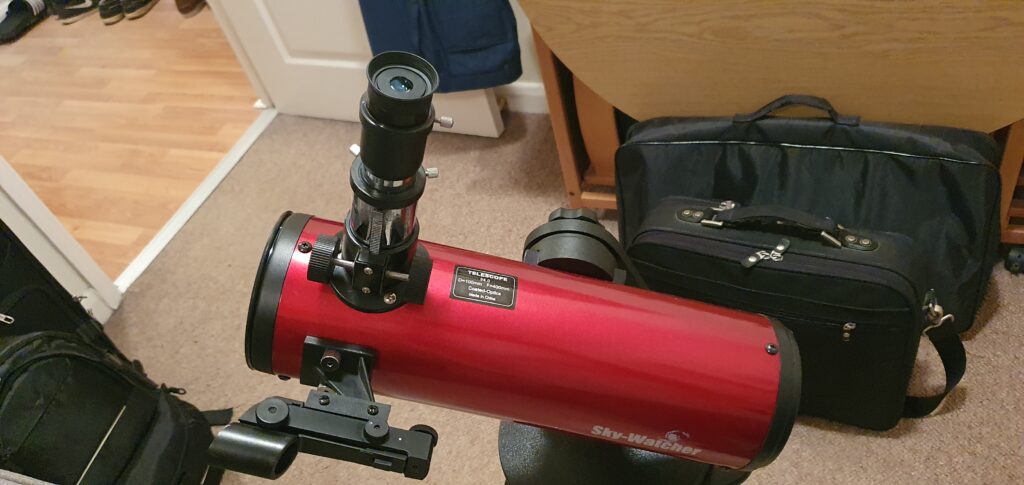
Entry level telescope
A great intro’ though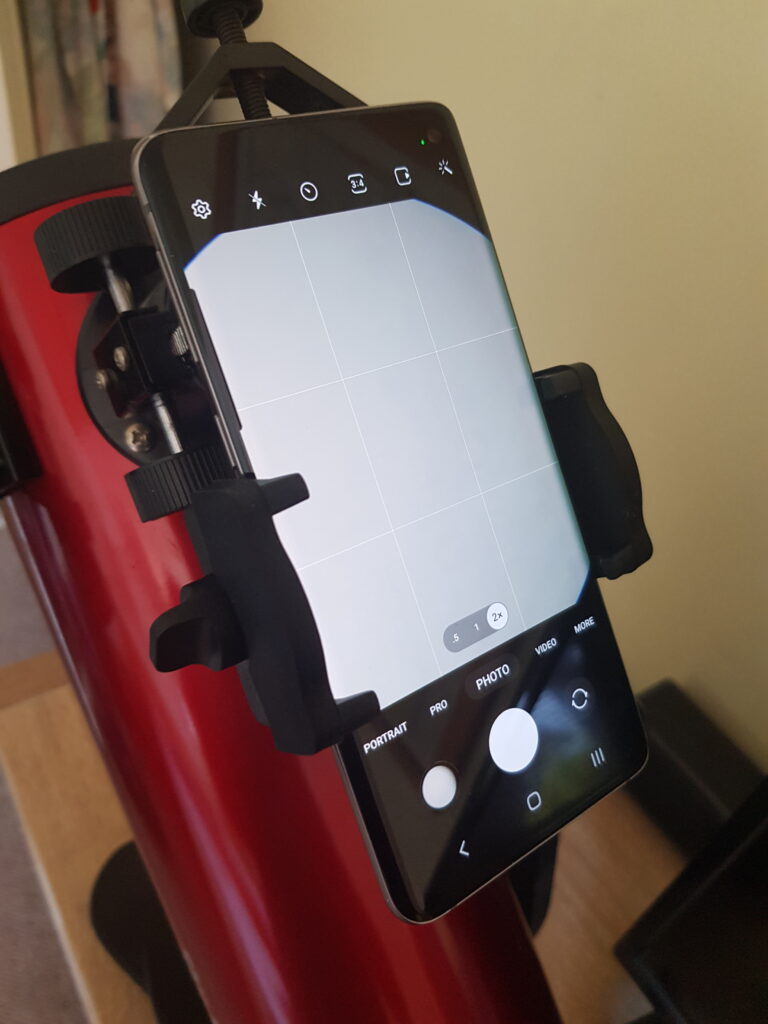
Phone mount on telescope 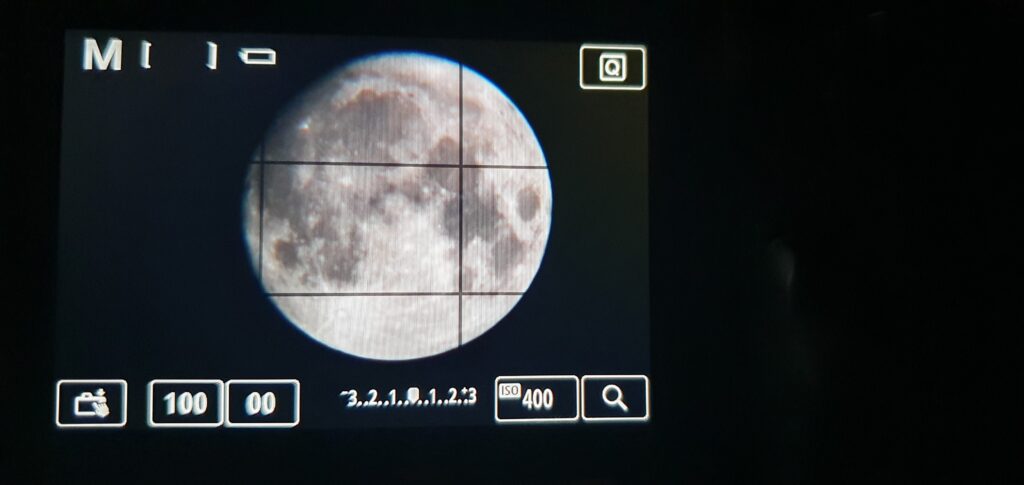
The Moon on DSLR screen – camera mounted to telescope 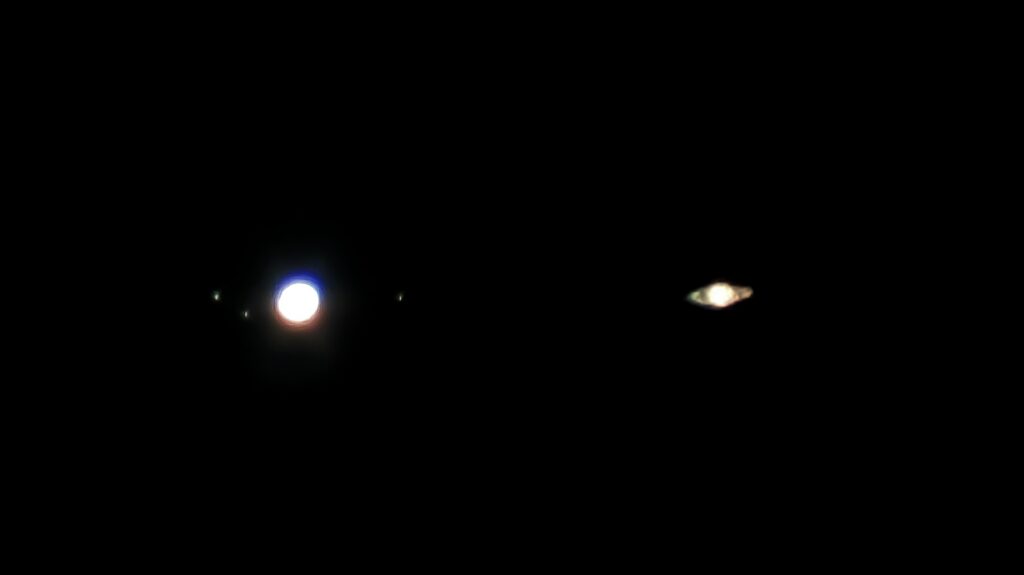
Jupiter with moons and Saturn
(seperate images)
This is about as much detail as I can achieve
So I am more focused on using existing camera equipment to photograph ‘deep sky’ objects (wider ‘star-scapes’, galaxies and nebulae etc)
My first few attempts have encouraging, pushing things to the limit in as far as long shutter speeds are concerned. As a result I have bought a basic motorised tracking mount to enable longer shutter speeds. Essentially, the mount rotates at the same rate as the earth (in the opposite direction) and therefore stays focused on what you have in frame while the stars ‘move’ across the sky.

I really like this one of Jupiter
A single 30secs exposure – the starburst effect is natural
The southern sky – Saturn is the brightest object on the left – another single 30sec shot
Then it’s been about researching and learning the techniques to squeeze every tiny bit of data out of the images – firstly by stacking a number of images together (this increases the total exposure time and helps to reduce the amount of unwanted ‘noise’) then using processing software to stretch the data .
It’s now a matter of waiting for some clear skies to try to capture some targets I’ve researched, setting the camera up for long sessions to get hours worth of exposure.
